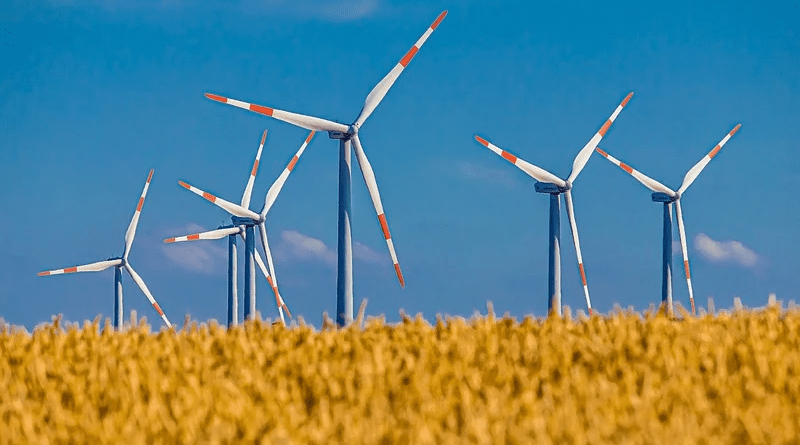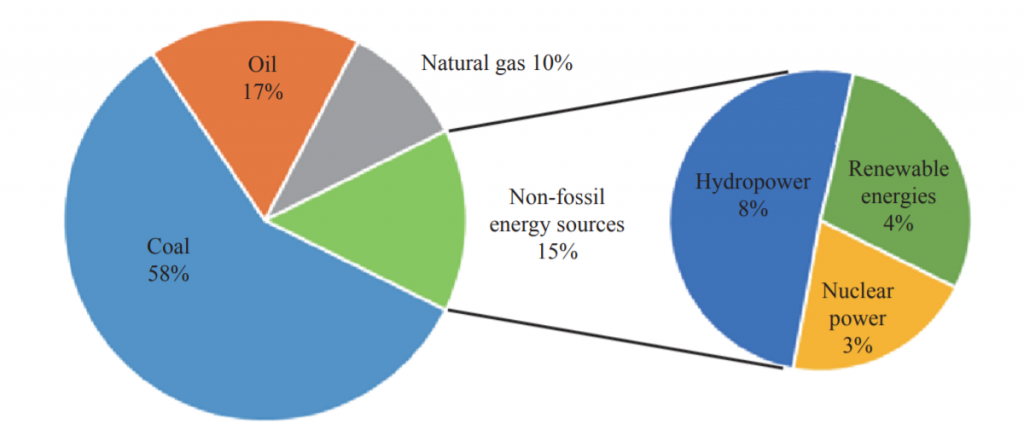China’s Quest For The Renewables – Analysis
By Observer Research Foundation
By Keerthana Rajesh Nambiar
The commitment to reach net-zero emissions by 2060 by the countries will determine the global energy system of the future. As the world starts to turn away from fossil fuels, China being the world’s largest greenhouse gas emitter plays a crucial role in achieving the net-zero target.
Under the leadership of President Xi Jinping, the Communist Party of China (CPC) has introduced various ‘implementation plans’ to ingrain the concept of green transition in the minds of common people. If the implementation plan for promoting green becomes successful, China would experience the fastest decline from peak emissions to carbon neutrality as compared to the United States and Europe. Yet it is also true that China’s quest for renewables has a long way to go in terms of making significant changes in the global energy system.
A wave of decarbonisation measures
Under the Paris climate agreement, countries around the world are pursuing policies to combat climate change. Over the years, China has taken rapid steps and made modest contributions to achieving the Paris goals. China aims to achieve its commitment toward decarbonisation through a capable political framework under the central government task force. The climate actions are primarily driven by domestic considerations, and secondly, shaped by strategy and diplomacy.
First, air pollution and its consequences are the major driving force for the Chinese government to invest in renewable energy. The Communist Party of China hopes to tackle the emissions and mitigate the risks of socio-economic instabilities in the country. Second, China plans to use the energy revolution to mitigate the geopolitical tensions influencing global energy security and supply chain management. The CPC plans to incorporate innovative practices working with multiple government ministries, state-owned industry associations and private companies. China’s renewable policy mainly focuses on practice goals set at provincial and national levels. It has issued policies setting public tendering for concession projects and protecting domestic industries. In a series of economic policies introduced, such as the reduction of import duties and VAT for wind electricity selling has strengthened the government’s support with policies and incentives.
In February, the National Development and Reform Commission, the Ministry and Information Technology, the Ministry of Housing and Urban-Rural Development, the Ministry of Commerce, the State Administration for Market Regulation, and the Central Administration formulated the ‘Implementation Plan for Promoting Green Consumption’. The plan is to install the concept of green consumption within the people by 2025 and to make a green and low-carbon development model of consumption by 2030.
In May, the State Council of the People’s Republic of China released a circular, planning to implement ‘high-quality development of new energy.’ It aims to accelerate the construction and development of a low-carbon environment realising the goal of 2030. According to the council, “China will focus on building major wind power and photovoltaic power stations in desert areas, integrate new energy exploitation and utilisation with rural revitalisation, and promote new energy application in industry and construction sectors.”
Through the years, China has specialised especially in the solar PV industry and the wind energy sector. As a country blessed with abundant natural resources, China has made significant progress in becoming the world leader in the manufacturing of renewable energy power technologies. In 2014 and 2015, Beijing bridged the gap and broke the world record on the efficiency of multicrystalline-silicon solar cells. In the process, China also became one of the foremost developers of renewable power technologies extracting maximum strategic benefits.
China’s measured approach
There are different angles to China’s ecological objectives in developing renewable energy. First, the internal formatting of the energy sector. China’s environmental aspects are relatively uncontroversial and largely supported by the population. The government provides various subsidies at a local level, boosting the manufacturing industry. Due to the manufacturing tax policies and price controls.
Second, the geopolitical aspect of energy. China has been strategic in placing its bets when it comes to climate change goals. In less than a decade, Beijing has been successful in increasing the proportion of renewable sources in its energy mix making it less reliant on other regions for energy security. According to the Strategic Study of the Chinese Academy of Engineering, in 2020, the total consumption of coal has been restricted to 58 percent and non-fossil fuel energy improved to 15 percent.
Racing against the clock
China has made a significant progress in low-carbon development. However, China’s renewable capacity is unable to compete with fossil fuel energy and dependence. One of the major concerns for China is fighting its carbon emissions. Even though China is still in the process of developing more ambitious targets, and urgently needs to decouple its economic growth from carbon emissions. The transition from fossil fuels to renewable energy is an arduous process and China’s current energy policy framework makes it difficult to meet the carbon emissions target. As an economy is overwhelmingly dependent on energy, China focuses more on speed-based economic growth.
Two, the current climate policies and renewable energy goals in China lack enforcement mechanisms. True to its nature, China is still a developing country and needs to invest in technological research and innovations. Although in 2021, China permitted new coal and steel projects exceeding the existing capacity of carbon emissions. Rapid evolution is required by the Chinese government-establishing formal and informal frameworks. The urgent decoupling of its growth from carbon emissions will upgrade China to a low-carbon environment.
Keerthana Rajesh Nambiar is a Research Intern at ORF.


